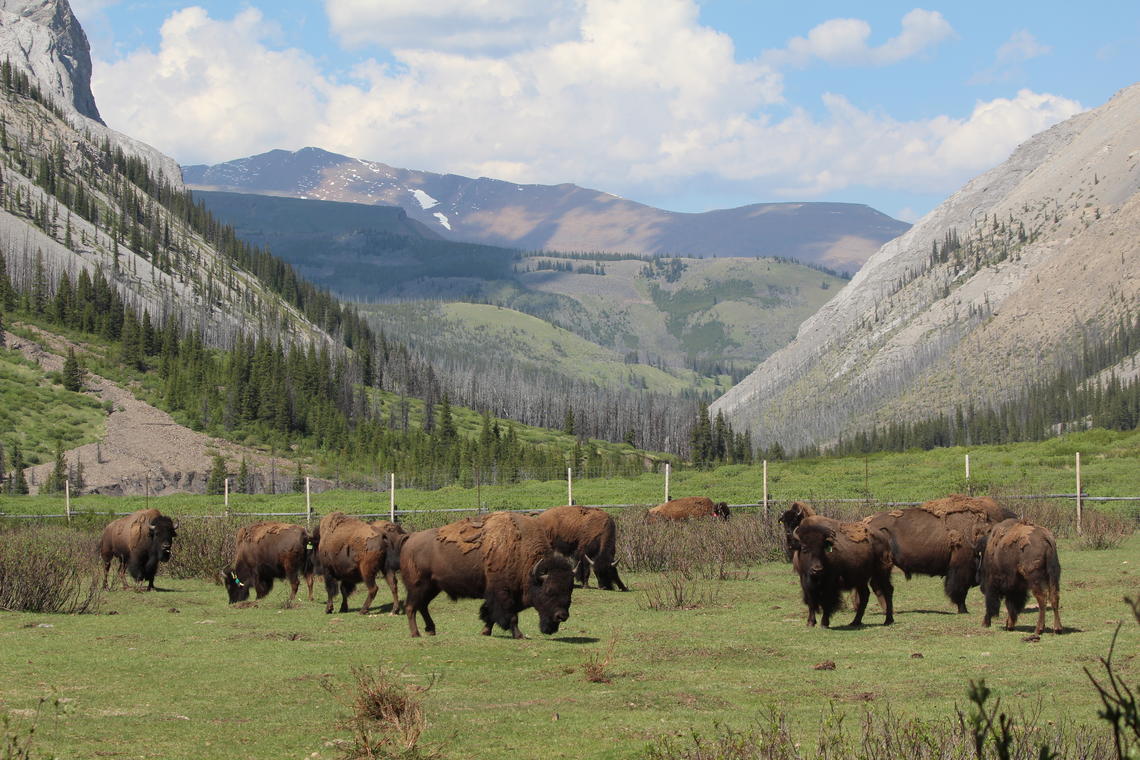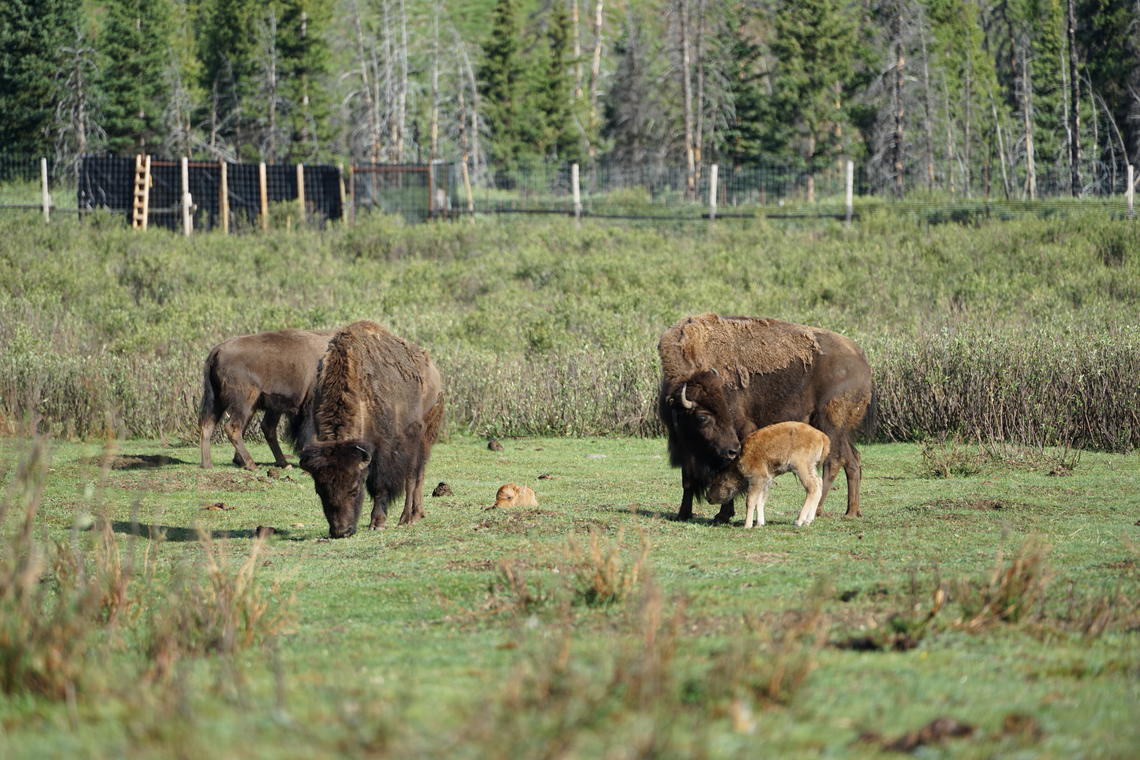Aug. 3, 2018
As wild bison return to Banff National Park, geographers study their impact on vegetation

This summer, as wild bison are reintroduced to Banff National Park for the first time in over a century, geographers from the University of Calgary have been surveying the move intently. But, rather than focusing on the bison, they’re zeroing in on the impact the lumbering mammals might make on the ecosystem, in particular the park’s vegetation.
“We expect that the bison will have major impact on vegetation communities in the park,” says Dr. Greg McDermid, PhD, professor in the Department of Geography, who is leading the study. “Prior to the bison being let loose, we performed detailed vegetation surveys over the reintroduction zone. Having done so, we can come back to the area over the years and accurately observe the impact the re-entering bison might make on these pastures.
“This is the first phase of a long-term study that will take years to pay off.”
Bison hunted to near extinction
After roaming freely in the area of Banff National Park for over 10,000 years, bison went missing from the park before it was established in 1885, having been hunted to near extinction.
Early last year, 16 bison were transported to a remote valley in Banff National Park in a move aimed at re-establishing a thriving herd. While some may remember a “display herd” of bison housed in a paddock near the Banff townsite until 1997, this newly introduced herd represents the return of wild bison, which have now been freed to wander their surroundings.
For over a year the re-entering bison have lived within a 45-acre enclosure where they were monitored by Parks Canada. In that time a new generation of calves were born and 26 bison were released into the park in late July. While roaming freely, the bison are radio-tagged and will be monitored with GPS, Parks Canada staff on hand to herd them, if needed.

Banff’s bison graze within the soft-release pasture located in the Panther Valley.
Caroline Hedin, Parks Canada
Monitored by university and Parks Canada
“We’ve got nothing to do with the monitoring of the bison,” McDermid clarifies. “That’s the job of Parks Canada and their bison team. What we’re interested in is the concept of the bison as an ecosystem engineer.”
McDermid explains that the current cohort of herbivores in Banff National Park directly affects the park’s ecosystem. “The deer and the elk and all of the herbivores in the park impact the ecosystem, from what the vegetation looks like to what the community of predators and scavengers look like. So, if you alter that mix, with the bison entering the picture, you can expect to see changes ripple through the park.”
“Bison are the largest land mammal in North America,” adds Lucy Poley, a doctoral student in the Department of Geography who has worked closely with McDermid on this research project. “They wallow. They form herds. They eat what other animals don’t. With their entrance, suddenly, the vegetation in the park might start to change, the predators may respond differently. When you change an aspect of the ecosystem, it sends a cascade through that ecosystem that inevitably alters it.”

Geography professor Greg McDermid is leading the project.
Riley Brandt, University of Calgary
Comparison to Yellowstone Park wolves project
Poley compares the reintroduction of bison in Banff to the similarly managed return of wolves to Yellowstone Park in the 1990s, a move that significantly altered the ecosystem in that area.
“We predict that the first impact of the bison in Banff will be a change in the vegetation community,” says McDermid. “I would speculate that the absence of bison in the park over the past century has meant fewer meadows and fewer pastures. Bison graze and I suspect that by putting bison back into Banff you can expect to see changes in the proportion of pastures to forests. Or, in a non-treed area you might expect to see a difference in the amount of shrubs versus grasses.”
Poley adds: “We’ve tried to create really detailed vegetation surveys of these pastures where we expect the bison will end up. Having done this now, before the bison entered the area, we can come back over the years and observe what has been the actual impact.”

The first cows to give birth to calves in 2018 nuzzle their calves, future of the Banff bison herd.
Peter White, Parks Canada
